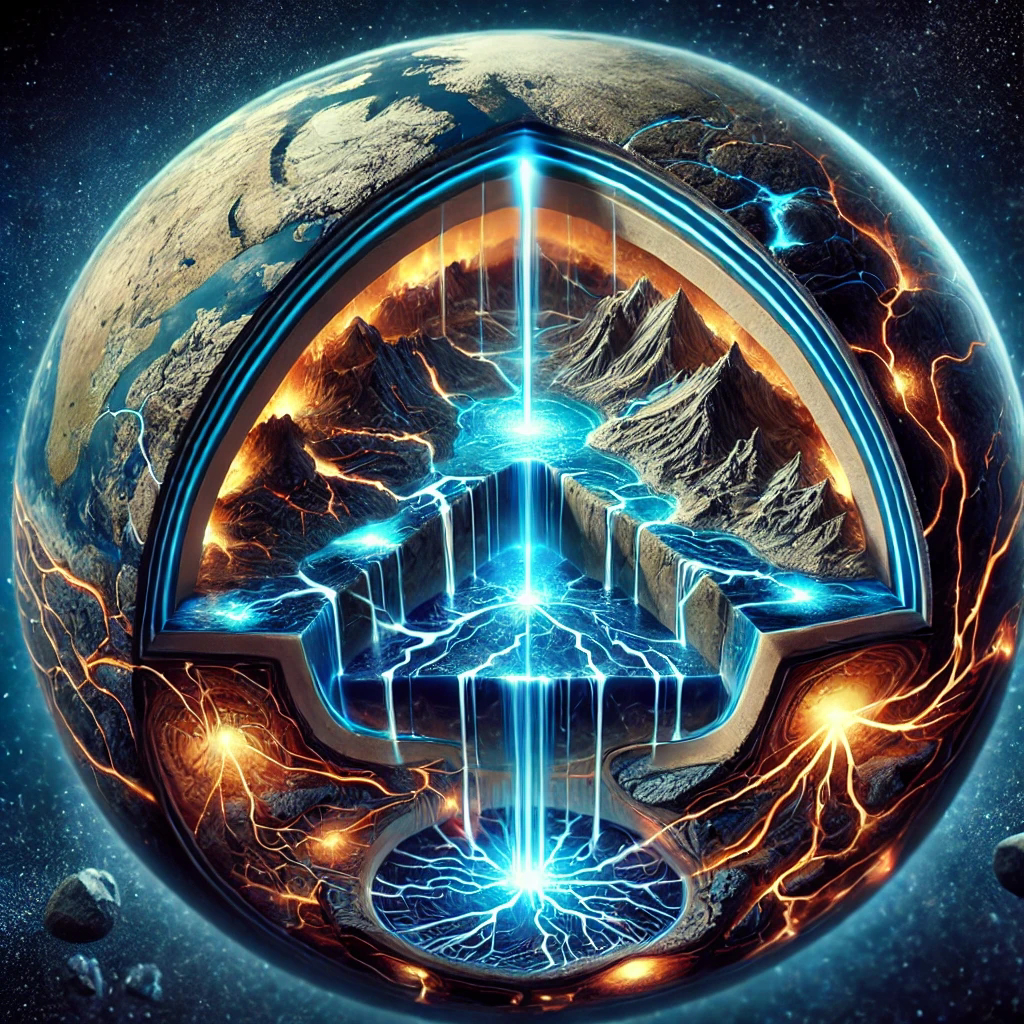Introduction
The Trapped Water Theory is an intriguing concept that has surfaced in discussions about geology, physics, and even esoteric science. It suggests that vast amounts of water are locked beneath the Earth’s surface, potentially influencing tectonic activity, climate, and even ancient history. Some interpretations link it to lost civilizations, while others focus on its implications for planetary science. In this article, we’ll break it down logically, exploring its origins, scientific basis, and broader implications.
The Origins of Trapped Water Theory
This idea isn’t new, but it has gained renewed attention with advancements in geology and hydrology. Ancient cultures spoke of underground oceans and hidden water sources, sometimes tying them to myths of great floods or lost lands. Modern science has confirmed the existence of deep reservoirs, but their role remains a topic of debate. Could these hidden waters explain some of the mysteries of Earth’s past?
The Science Behind Trapped Water
Geologists have discovered that water exists deep within the Earth’s mantle, trapped within minerals like ringwoodite. This form of water isn’t liquid but is bound within the mineral structure at high pressures. If released, it could contribute to volcanic activity, earthquakes, or even influence long-term climate patterns. Some studies suggest that the amount of water locked within the Earth could rival or even exceed the volume of the surface oceans.
How Water Gets Trapped
The process of water becoming trapped underground is tied to plate tectonics. When oceanic plates subduct beneath continental plates, they carry water down with them. This water gets incorporated into minerals under intense heat and pressure, effectively locking it away. Over geological timescales, some of this water is released through volcanic activity, while much of it remains hidden beneath the crust.
The Connection to Ancient Flood Myths
Many ancient civilizations tell stories of catastrophic floods. The Sumerians, Babylonians, Hebrews, and even Indigenous American cultures have similar accounts of deluges reshaping the world. Some researchers speculate that sudden releases of trapped water could have caused massive flooding events in prehistoric times. If so, the Trapped Water Theory might provide a scientific basis for these ancient legends.
Implications for Earth’s Climate
Trapped water could play a role in long-term climate cycles. If large quantities of water are periodically released through volcanic activity, they could influence atmospheric moisture levels and global temperatures. Conversely, if more water is locked away over time, sea levels might decrease over geological timescales. Understanding these processes could help refine climate models and predictions.
The Role of Trapped Water in Tectonic Activity
Water reduces friction between tectonic plates, making it a key factor in seismic activity. When water is gradually released from deep minerals, it can lubricate faults and trigger earthquakes. Some scientists believe this could explain certain patterns of deep-focus earthquakes, which occur at depths where water should not exist in liquid form. This hidden hydration cycle might be more influential than we currently understand.
Could Trapped Water Explain the Formation of Continents?
Some radical theories propose that ancient reservoirs of trapped water could have played a role in the shaping of continents. If large amounts of water were suddenly released, it could have influenced the breakup of supercontinents like Pangea. While this idea remains speculative, it aligns with the notion that Earth’s internal water cycle is more dynamic than previously thought.
The Trapped Water Hypothesis in Space Science
Beyond Earth, researchers are now applying this theory to other planetary bodies. Some moons of Jupiter and Saturn appear to have subsurface oceans beneath their icy crusts. If trapped water exists on Mars, it could have implications for past life and future human exploration. Understanding Earth’s trapped water system might help us interpret similar processes on other planets.
Theoretical and Esoteric Interpretations
Some interpretations of the Trapped Water Theory move beyond mainstream science. Certain esoteric thinkers link it to the concept of a hollow Earth or secret underground civilizations. Others speculate that this hidden water may hold energetic properties, influencing human consciousness or Earth’s electromagnetic field. While these ideas remain fringe, they add another layer to the discussion.
How Could We Test This Theory Further?
Seismology and deep drilling projects could provide more insights into Earth’s internal water reserves. Advancements in spectroscopy and remote sensing may also help detect hidden water without direct drilling. If we could better map these underground reservoirs, we might uncover connections between deep Earth processes and surface phenomena. Future missions to other planets might also provide comparative data, strengthening or challenging current models.
The Risks of Tapping into Trapped Water
Some researchers suggest that accessing these hidden reserves could be dangerous. If large-scale drilling or fracking releases significant amounts of water too quickly, it could destabilize fault lines or alter the balance of underground pressure. The possibility of triggering earthquakes, sinkholes, or even unintended climate shifts should be considered before any large-scale exploitation. Caution is necessary when dealing with forces we barely understand.
Could Trapped Water Solve the Global Water Crisis?
With freshwater shortages becoming a global issue, some have speculated that accessing deep water reserves could be a solution. However, most of this water is highly mineralized or locked within rock structures. Extracting it on a large scale would be technologically challenging and environmentally risky. While it’s an interesting possibility, more research is needed before considering it a viable resource.
Final Thoughts
The Trapped Water Theory opens the door to many fascinating discussions. Whether viewed through a scientific, historical, or speculative lens, it challenges our understanding of Earth’s hidden systems. As technology advances, we may uncover more about how trapped water has shaped our planet’s past and will influence its future. For now, it’s a mystery still waiting to be fully unraveled.
Stay curious.




